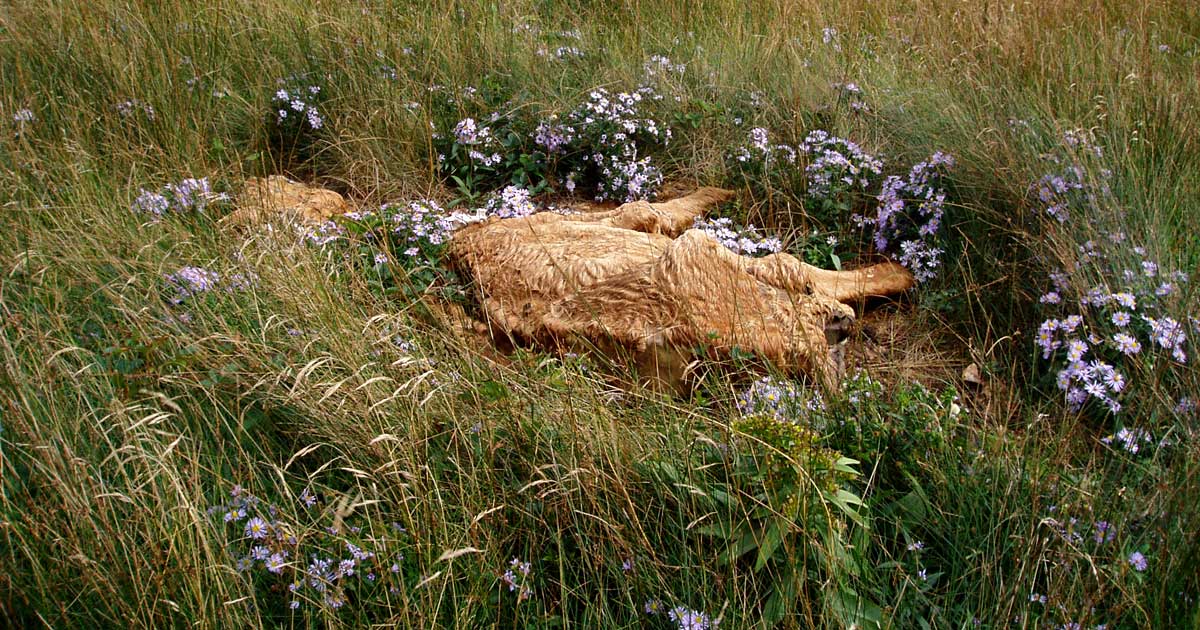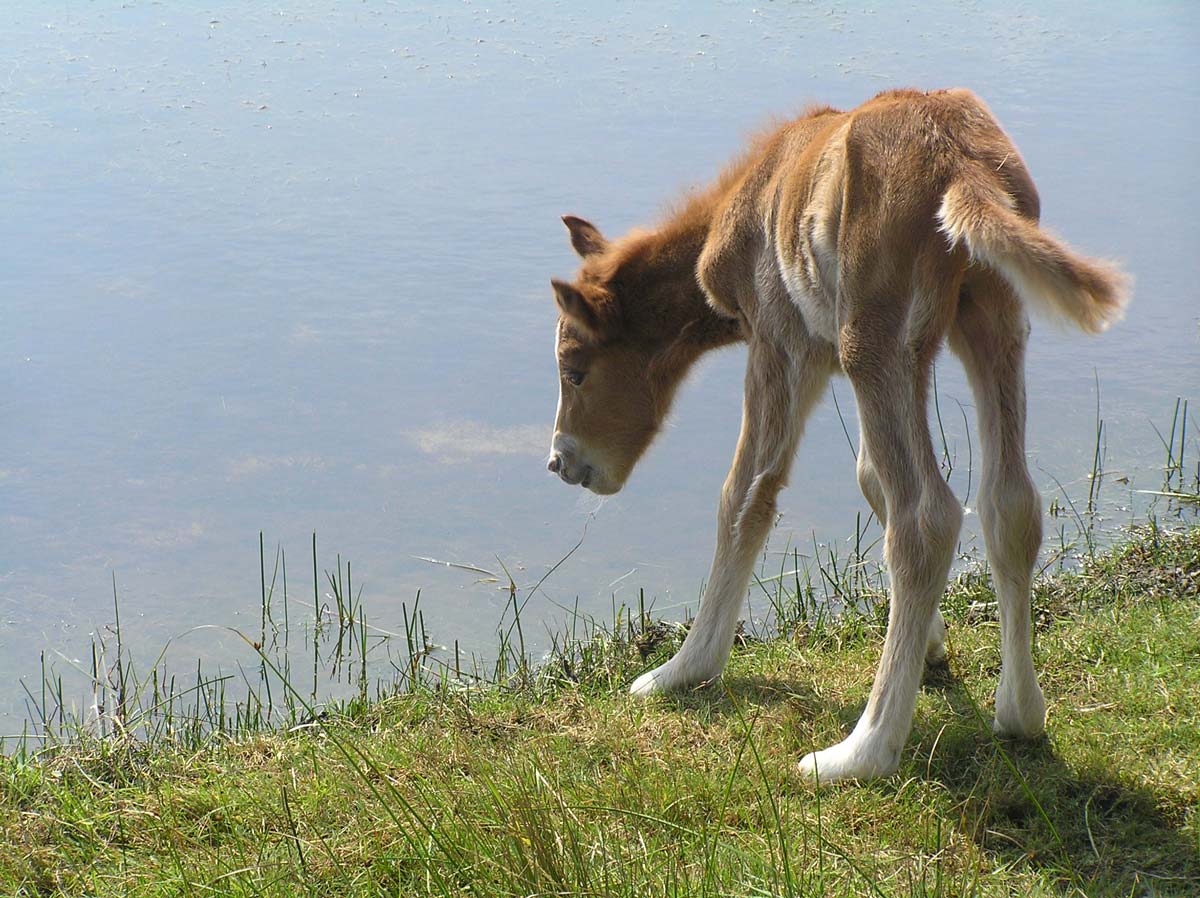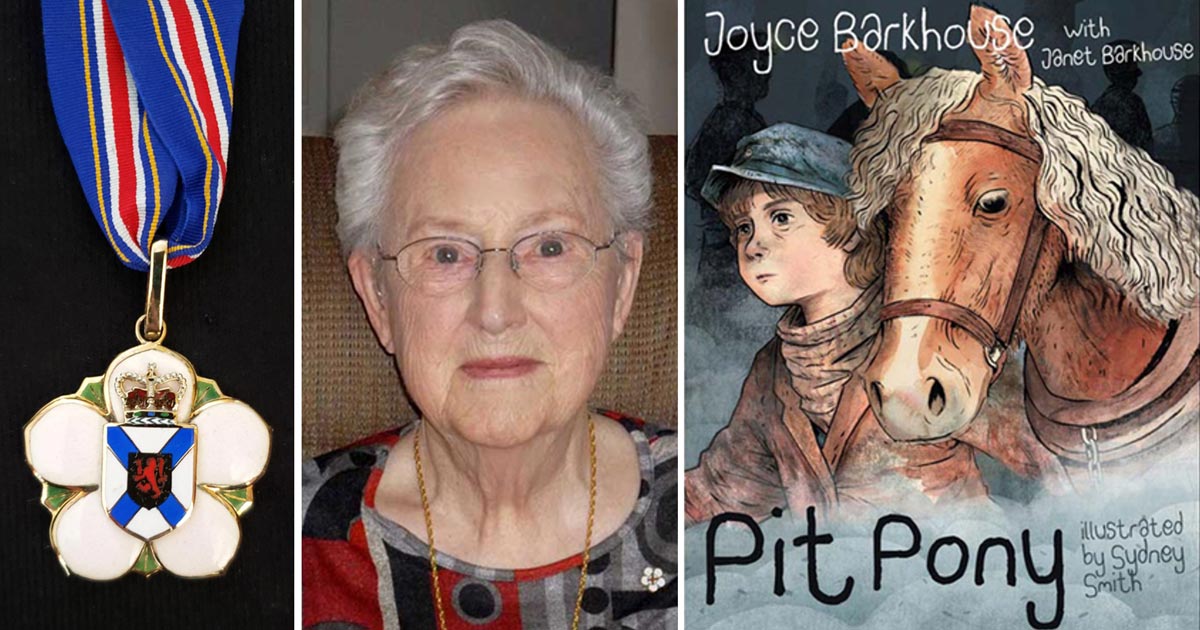Image above: The Order of Nova Scotia received by Joyce Barkhouse in 2007; Joyce in 2009; and the cover of “Pit Pony the Picture Book” published in 2012.
Joyce Barkhouse was born Joyce Carman Killam on May 3, 1913, in Nova Scotia. The daughter of a “horse-and-buggy” doctor, Joyce attended a two-room village school in Woodville, Annapolis Valley, until transferring to King’s County Academy in Kentville to complete grade twelve. After receiving a Teacher’s License from the Provincial Normal College in Truro in 1932, she began teaching in the Annapolis Valley community of Sand Hill (now called East Aylesford). Joyce taught all subjects in a one-room school comprised of grades one to eleven. She taught full time for eight years, until she married. During her teaching career, Joyce found that her strength was in teaching the early grades.
 Joyce’s father, Doctor Harold Killam, sitting with daughter Margaret (the late Margaret Atwood, Senior) in his rubber-tired buggy, ca.1910, Annapolis Valley, Nova Scotia.
Joyce’s father, Doctor Harold Killam, sitting with daughter Margaret (the late Margaret Atwood, Senior) in his rubber-tired buggy, ca.1910, Annapolis Valley, Nova Scotia.
Dr. Killam’s favourite horse, shown above, was a mare called Gem. Although Gem was not from Sable Island, the trust and fondness she inspired are reflected in the book Pit Pony which was published some 80 years after this photo was taken.
Joyce came from a horse-loving family. Horses in the Webster-Killam clan included Blackie, Goldie, Nellie, Molly, Mighty Maude, Lil Abner, and Gem. Her older sister Margaret (mother of author Margaret Atwood) was a keen horsewoman—she received riding tack, such as saddle and bridle, on her graduations. Grandfather Webster was a great horse lover, and Joyce recalls how her grandfather was so furious when he encountered a man beating a horse that he jumped out of his wagon and purchased the abused animal on the spot. He gave the horse, Blackie, to Margaret, and she nursed the poor, broken animal back to glossy good health.
Goldie belonged to Joyce’s Uncle Fred, but she was caught in the Halifax Explosion of 1917. Fred’s family home and flower nursery business were in the north end of Halifax, and his beloved horse lived in a barn next to the house. When the munitions ship Mont Blanc exploded, Fred’s business was “blown to smithereens”. At the time, Fred was sick in bed and his wife Rose was temporarily trapped in the basement, but both survived. Goldie, however, died in the ensuing fire.
Nellie was the first horse ridden by Joyce. She had to deliver medicine to one of her father’s patients, and during the ride she learned the lesson of the “loose girth” familiar to many novice riders.
Following her marriage, Joyce lived in Halifax, Charlottetown and Montreal, and eventually returned to Nova Scotia.
A Published Author at Nineteen
The writings of Joyce Barkhouse have been described as reflecting a love of Nova Scotia and an interest in the “forgotten”. From an early age Joyce had been interested in writing stories. Being the middle child between two older sisters and two younger brothers, she was somewhat of a loner. Her grandfather gave her a copy of a Baptist Church paper for children called The Northern Messenger and after reading it, Joyce thought that she could write just as well, and submitted a short story. It was accepted, Joyce was paid $1.00, and became published at nineteen years of age.
Thereafter she wrote many children’s stories (secular stories, tales of adventure) for various church papers. Her articles were also published in a USA teachers’ publication, and in the Family Herald and Weekly Star (FHWS), a national newspaper popular in rural Canada. While living in Montreal, Joyce wrote a series about Expo 67 for the FHWS and for a California publication called Trailering Guide.
Although she had been writing for many years, Joyce did not publish a full-length book until she was sixty-one years old and a grandmother. Her first book, for young adults, was George Dawson: The Little Giant in 1974. Joyce had come across an article about Dawson in the Montreal Gazette. She was intrigued by the character—little known, but heroic—but could find scant information about him. Eventually, in McGill University’s rare books collection, Joyce found Life and Letters of George Dawson, and then met Dawson’s niece, the author Lois Winslow-Spragge, who encouraged Joyce and helped with research for the book.
In those days there was very little history written for young people. Joyce’s book about Dawson received good reviews, and was followed by books celebrating the accomplishments of two other Nova Scotians, Abraham Gesner (a geologist who developed a process for manufacturing kerosene) and Thomas Raddall (an author of historical fiction about Nova Scotia). Raddall had worked on Sable Island as a young man, and much of the plot for his book The Nymph and the Lamp was set on the island.
Joyce Barkhouse wrote eight books, and her articles and short stories have been published in anthologies, school textbooks and periodicals in Canada and the USA. For several years she wrote a self-syndicated column “For Mother and Others” which appeared in Nova Scotia weekly newspapers. Most of her writing was for young people. Sponsored by the Canada Council and the Canadian Children’s Book Centre, Joyce toured in Canada, talking to school children. Beginning with her first published story in The Northern Messenger, Joyce learned her craft through experience, editors’ comments and workshops. Her working papers and related materials (1960-1998) are in the Killam Library Archives, and serve as an important collection showing the development of a writer over a number of years.
Pit Pony
Until Pit Pony, most of Joyce’s books had been biographies and retellings of myths. She wanted to write her “own book”, to create a story about horses for children. While researching Gesner, she learned that he had been shipwrecked off Brier Island while travelling on a vessel taking a cargo of horses to the Caribbean. This brought to mind stories of shipwrecked horses cast ashore on Sable Island, and led to a conversation with Barbara Christie about the history of the Sable Island horses (The Horses of Sable Island, Barbara Christie, 1995). Joyce wrote a piece about the island’s wild horses for the FHWS.
While visiting her friend Marian MacDonald in Pictou, Joyce heard about young boys working in coal mines. She recalls an account of two boys working in a Pictou mine. Both were very frightened, and one day when one of the boys was so sick he couldn’t go to work, the other refused to go into the mine without him. On that very day there was a rock fall in the tunnel. Joyce saw a parallel in the sad and cruel stories of both the young boys and the Sable Island horses forced to work in mines.
Joyce’s love of horses, her interest in Sable Island, and her compassion for the young Pictou miners converged in the novel Pit Pony, but she had to set her story in Cape Breton.
As Joyce explained, Sable Island horses were not used in the Pictou mines; rather they were used in Cape Breton where many coal ore seams were narrow. To save money, mine tunnels were excavated no wider than the seam, and this resulted in narrow, low tunnels that were too tight for average-sized horses. The small Sable horses, however, could be used. The ore seams in Pictou were wider, so tunnels were bigger and could accommodate larger horses.
 A band of Sable horses walking on the south beach during a sunny October day. When he was a foal, the band stallion (in the lead) was named “Gem” after the chestnut mare in Pit Pony (who had been named after Dr. Killam’s little mare).
A band of Sable horses walking on the south beach during a sunny October day. When he was a foal, the band stallion (in the lead) was named “Gem” after the chestnut mare in Pit Pony (who had been named after Dr. Killam’s little mare).
Joyce spent ten years on and off working on the book, doing research and background reading, and was at times unsure about completing the work. During a visit to Acadia University where she spoke to students about her book The Witch of Port LaJoye, she was asked about future projects. Joyce told the group that she was trying to write a book about boys and horses in the coal mines. Afterwards a student approached and asked her to complete the book. He told Joyce that he’d had an uncle who died in the Springhill Mine Disaster of 1958. Pit Pony was published in 1990.
Joyce believed that an essential element of education is the rich detail to be found in a child’s own local history. In Pit Pony, Joyce educates about life in a coal-mining town in turn-of-the-century Cape Breton, but also deals with the importance of education itself. It is the story of Willie and Gem. Willie is an eleven-year-old boy forced by family circumstances to work in a Cape Breton coal mine, and Gem is a Sable Island mare used as a ‘pit pony’. As they work together, a strong bond develops between boy and horse.
The book describes the grim realities of life for a young miner—cold, exhaustion, fear—discomforts and dangers that also affected the horses. When Willie and Gem are trapped in the mine during a “bump”—with falling rock and timber, and choking dust—Willie must choose between escaping with Gem or saving the life of another young miner. Willie’s choice and Gem’s death set Willie free, free to leave the mines and to pursue his education. As it turns out, however, Gem had been pregnant, and her foal, Sandy, is saved.
Many children wrote to Joyce about Pit Pony. Some strongly related to Gem and expressed anger about her death in the mine. In reply, Joyce explained that Willie was devoted to Gem and, he would not have left his life as a coal miner without her. In Pit Pony, Joyce attempted to express a real-world balance between Willie’s future, Gem’s death, and Sandy’s birth, a “true-to-life story” which deals with universal truths such as how animals and people die, but life goes on as new foals and children are born. These truths are evident everywhere on Sable Island.
 Around the body of a horse that died during the winter, an abundance of new life—grass and flowering aster—grows thick and tall. Sometimes, for two or three years after the body of a horse or a bird has returned to the sandy soil, the site is marked by vigorous green vegetation around a few sun-bleached bones.
Around the body of a horse that died during the winter, an abundance of new life—grass and flowering aster—grows thick and tall. Sometimes, for two or three years after the body of a horse or a bird has returned to the sandy soil, the site is marked by vigorous green vegetation around a few sun-bleached bones.
After Pit Pony was published, Joyce received mail from mining communities in western Canada, and a mining company in British Columbia donated copies to schools in that province. Pit Pony was named as notable by the Canadian Library Association; received the first Ann Connor Brimer Award in 1991 for “outstanding contribution to children’s literature in Atlantic Canada”; and was the unanimous choice of Nova Scotia librarians to be produced as a Talking Book for the CNIB, for national and international distribution.
Pit Pony was made into a CBC-TV movie by Cochran Entertainment (1997), won three Gemini Awards, and became a 44-episode TV series.
In 2009, actor Richard Donat read Pit Pony for an audio book produced by Marcia Pierce Harding. In 2012, Joyce’s Pit Pony, The Picture Book, a collaboration with her daughter, Janet Barkhouse, and wonderfully illustrated by Sydney Smith, was published by Formac.
 Pit Pony the Picture Book. Illustrated by Sydney Smith. Formac Publishing Company Limited, Halifax, Nova Scotia, 2012.
Pit Pony the Picture Book. Illustrated by Sydney Smith. Formac Publishing Company Limited, Halifax, Nova Scotia, 2012.
 Gem (second from right) and his band—four mares (Ice, Gabrielle, Goldie, Kiwi) and Kiwi’s sleeping foal—resting during a September afternoon. Gem was a band stallion on the island for over a decade.
Gem (second from right) and his band—four mares (Ice, Gabrielle, Goldie, Kiwi) and Kiwi’s sleeping foal—resting during a September afternoon. Gem was a band stallion on the island for over a decade.
Recognition and Remembered
In 1993, the Joyce Barkhouse Writing for Children Award was established by the Writers’ Federation of Nova Scotia (WFNS). In 2007, Joyce was awarded the Order of Nova Scotia. In 2009, she was named a Member of the Order of Canada for “her contributions to children’s literature and the Canadian literary community”. She was an honorary life member of the Writers’ Union of Canada and the WFNS.
 Joyce Barkhouse, in 2009, wearing the Order of Nova Scotia medal, and having just received the Member of the Order of Canada medal. The ONS medal is shown in detail on the right.
Joyce Barkhouse, in 2009, wearing the Order of Nova Scotia medal, and having just received the Member of the Order of Canada medal. The ONS medal is shown in detail on the right.
Although Joyce did not have an opportunity to visit Sable Island, she was a founding member of the Green Horse Society, and was an ally of the island for many years. Joyce paid close attention to the long campaign to save the Sable Island Station and the atmospheric research facility—she expressed her concern about the future of the Station in letters sent to various Members of Parliament and government Ministers. Her support and encouragement were greatly appreciated during those times of uncertainty. For years Joyce and Zoe enjoyed a regular correspondence between Bridgewater and Sable Island, eventually moving from paper pages in paper envelopes to email.
When Joyce Barkhouse died in February 2012, at the age of 98, Sable Island and the Green Horse Society lost a great friend. Joyce was a beloved companion on the Sable journey, and through her writings and our cherished memories, she is still with us and with the Sable Island community.
An excerpt from the poem “floats a wild foal’s tail”
“At tide’s turn, the kind air
drifts my mum’s last breath
far over surf to Sable dunes.
There it floats a wild foal’s tail,
rattles through dry grass, settles
at dusk to wait for stars.”
Sable Island Fieldnotes, Janet Barkhouse, 2017
 One of the last foals born in Gem’s band.
One of the last foals born in Gem’s band.
“Gem’s Story”, Joyce Barkhouse, 2004
In 2004, Joyce Barkhouse wrote about how memories of her father’s horse Gem were part of the inspiration for her book Pit Pony. As a country doctor, her father spent much of his life on the roads making house calls, traveling between the towns of Kentville and Berwick and up over the steep ridge of the North Mountain to the Bay of Fundy shore. Long after Gem was no longer alive, Joyce’s father would tell stories of his brave little mare. He had learned to trust Gem, on dark nights, in blizzards, and in blinding rain. Often exhausted, he would fall asleep, the reins slack in his hands, and Gem would take him safely home.
Read more…
 Joyce Barkhouse, and the Sable Island horse that was called Gem as a gesture of friendship and connection.
Joyce Barkhouse, and the Sable Island horse that was called Gem as a gesture of friendship and connection.
Joyce Barkhouse, selected writings:
- George Dawson: The Little Giant, Clarke, Irwin, 1974; Natural Heritage/Natural History, 1989.
- Abraham Gesner, Fitzhenry & Whiteside, 1980.
- Anna’s Pet (with Margaret Atwood; illustrated by Ann Blades), Lorimer, 1980.
- The Witch of Port LaJoye, Ragweed Press, 1983.
- The Heroine of Lunenberg, in: Windows and Mirrors, Prentice-Hall, 1986.
- A Name for Himself: A Biography of Thomas Head Raddall, Natural Heritage/Natural History, 1986.
- Pit Pony, Gage, 1990.
- Wiskijek and Henri, in: Ordinary People in Canada’s Past, Arnold, 1990.
- Yesterday’s Children, Lancelot Press, 1992.
- Haunted Island, in: The Unseen – Scary Stories, ed. Janet Lunn, 1994, Lester Publishing Limited.
- Smallest Rabbit, Lancelot Press, 1996.
- Pit Pony the Picture Book (illustrated by Sydney Smith), Formac Publishing Company Limited, 2012.
An earlier version of this article was published in February 2004 in the website of the Friends of the Green Horse Society.
Zoe Lucas
Sable Island Institute, May 2018, updated February 2022


4 Responses
Joyce was a truly remarkable person. Quiet , unassuming, her sense of humour at the perversities of life was always ready to help in a sticky situation. An indefatigable letter writer we kept a paper and ink correspondence until shortly before her death. I miss her greatly. Elizabeth Ells, cousin in law
A lovely tribute to my wonderful Aunt Joyce. — Margaret Atwood
Such love for the horses. True heart and soul that matters so much in this world.
What an inspiring story! With my own love of the Sable Island horses and stories of all the struggles encountered by the early residents of that wonderful smile of sand, I am certainly encouraged to continue following more tales of adventure. I also hope to begin a collection of books about the wonderful bond that exists between horses and the people that care for them, mainly young people. My own father deeply loved horses and often shared the stories in which he indulged in reading, which unfortunsyely wasn’t that often, living on the farm seventy years ago. Thank you; I’ve thoroughly enjoyed this story!